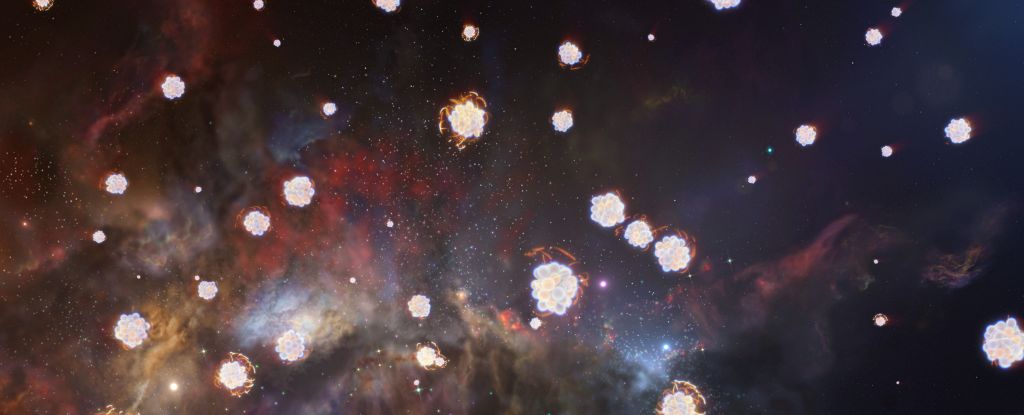Astronomers have detected the chemical imprints of the first stars to exist in the universe, which exploded billions of years ago. The remains of these stars are difficult to find as they exploded too far away to detect with current instruments. However, the material they left behind during their explosions, such as carbon, oxygen and magnesium, can still be found drifting in clouds of gas through the early universe.
Discovery
Using the X-shooter instrument on the European Southern Observatory’s Very Large Telescope, scientists analyzed the light of quasars, which are bright, distant galaxies. As the light travels through space, it sometimes passes through clouds of material, changing the light and making certain parts of the spectrum brighter or dimmer. By studying the signatures in the spectrum, scientists can identify specific elements. The researchers examined 54 clouds of material and found the signature of carbon and oxygen, along with magnesium and a low level of heavier elements such as iron, in three of the clouds. These clouds date back to between 1 and 2 billion years after the Big Bang.
Implications
The findings suggest that remnants of the first stars can be found indirectly by detecting the chemical elements they dispersed in their environment after their death. The stars, known as Population III stars, were primarily composed of hydrogen and helium, but their nuclear reactions fused the atoms of these elements to create heavier ones, which were then scattered into space when the star exploded. The research opens up new avenues to indirectly study the nature of the first stars and learn more about the evolution of matter in the universe as stars change the elemental abundances of the universe over time.



Leave a Reply